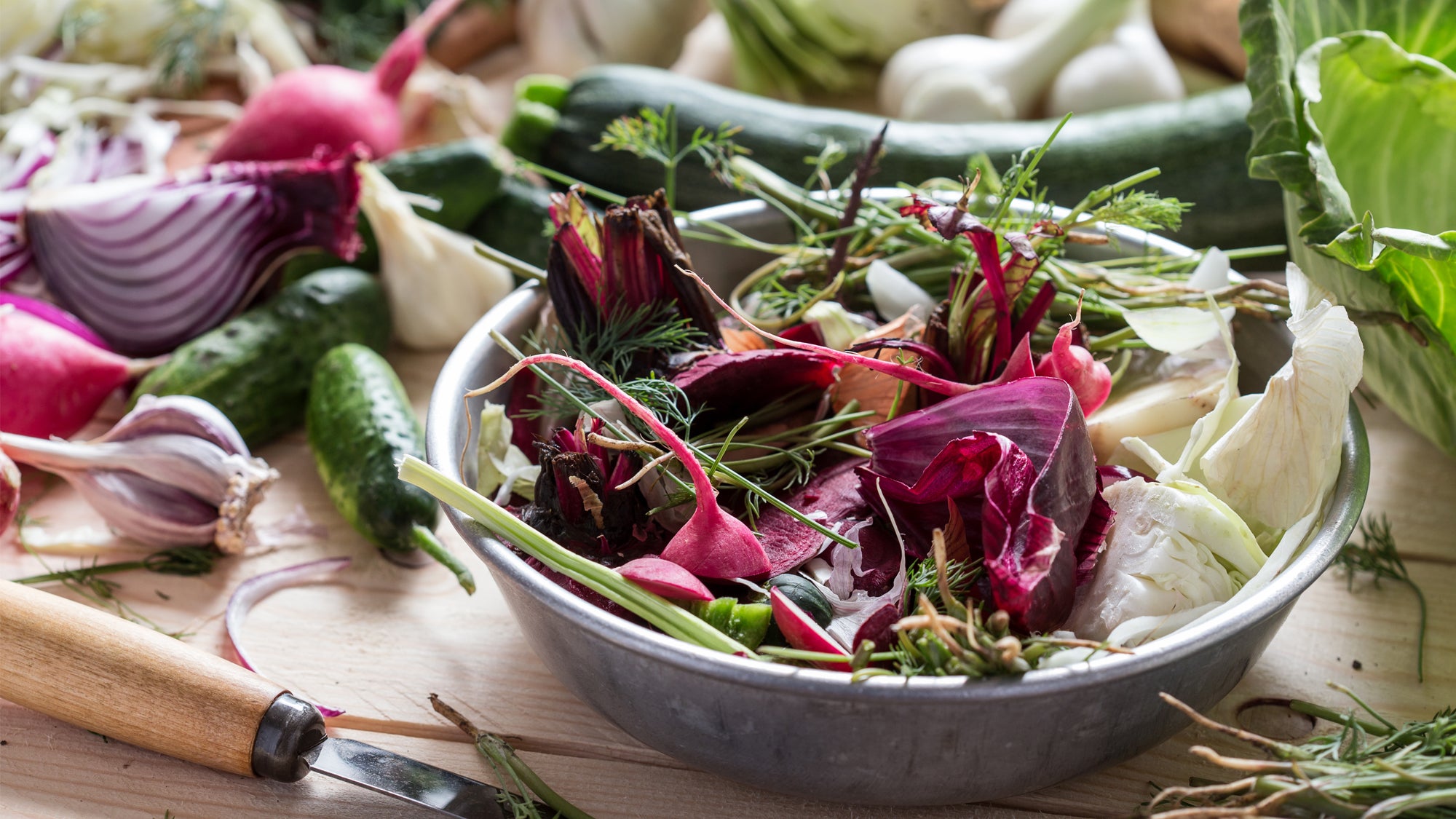Composting 101

(Photo: Getty Images)
What exactly is composting, and how does it work?
Composting is the process of decomposing organic materials into rich, nurturing fertilizer. Materials are typically a mix of carbon-rich brown matter (straw, fabric, sawdust, wood chips) and nitrogen-rich green matter (grass clippings, coffee grounds, eggshells). The carbon and nitrogen found in compost is a critical food source for healthy microbes that allow for thriving soil.
There are four common methods: hot pile, cold, vermicomposting and electric cycling.
Hot pile, or aerobic, involves tossing green and brown matter into an open pile exposed to oxygen and water. This pile becomes “hot” (ideally 160°F) as bacterial microbes decompose the matter rapidly. However, overheating can cause mold or destroy healthy microbes, so you’ll need to flip the pile consistently to ensure even distribution of moisture and heat. This takes roughly six to nine months to produce fertilizer.
Cold composting, or passive composting, is a simpler but slower method. Just mix brown and green matter in your compost and let everything decompose into fertilizer over a year or two. However, while less work, this approach can lead to development of unpleasant smells, bacteria, fungi or parasites.
The third method, vermicomposting, is done in an enclosed bin. Organic matter is added to a bed of scrap paper, straw or hay. Then, worms are added to break it down. The worms eat the scraps and their feces becomes a dark, rich compost material called humus. Vermicomposting is generally more expensive than hot pile, but it can be a more flexible option as it can be done indoors or outdoors. Plus, it’s much faster, taking only two to three months to produce compost.
A newer innovation is the electric cycler. This is an indoor bin that dries, grinds and cools food waste to create a dry fertilizer that isn’t as messy or smelly as wet compost.
According to the Environmental Protection Agency, composting reduces reliance on chemical fertilizers, prevents toxic runoff towards oceans and rivers, decreases erosion and diverts waste away from landfills.
Why compost? Don’t compostable items just biodegrade anyway?
DIY composting is one of the easiest, most tangible ways to reduce your carbon footprint. Many think that if you toss your food into a landfill, it’ll decompose all the same. Not true! Food waste in the landfill ends up buried and is not exposed to much oxygen. This anaerobic process results in the production of methane, a potent greenhouse gas that’s driving global climate change. According to the International Energy Agency, landfills remain the third-largest source of human-related methane emissions in the U.S., after agriculture and nonrenewable energy.
Meanwhile, composting is an aerobic process: The waste receives plenty of oxygen, meaning the methane-producing microbes found in landfills won’t be present in large quantities. With access to air and water, your compost will produce a much richer humus. The humus helps fight off pathogens and can keep you from depending excessively on chemical fertilizers and pesticides. It’s a win for both your home and the planet.
How can I start composting more?
Many cities offer a composting operation that gathers, sorts and processes waste from individual households. Toss your scraps into a curbside “green bin” that an industrial facility will collect and process. If your city doesn’t offer this service, try DIY! Store scraps (from fruit, vegetables, eggshells) in an airtight compost container and store somewhere covered, like under the sink, to keep fruit flies away. Do not dispose of meat, grease or bones here, as these may attract pests that can destroy your compost. Transfer the waste into a backyard hot or cold pile, a vermicomposting bin or an electric cycler for further processing. With a little patience, love and nurturing, you’ll have rich, tasty compost for your garden to enjoy!
Compostable vs. biodegradable vs. zero waste
Compostable
Compostable materials (such as food scraps and leaves) are all biodegradable, meaning they all break down into organic waste and turn into nutritious compost. This is typically a much faster process than the breakdown of biodegradable items that end up in landfills.
Compostable items:
- Fruit and vegetable scraps
- Carbs (crackers, cereals, noodles)
- Nuts and seeds
- Spoiled plant-based milk
- Jarred/canned sauces
- Loose tea leaves and coffee grounds
- Beans and legumes
- Napkins and paper towels
- Plant waste (yard waste, dead flowers and stems, houseplant trimmings)
- Old herbs and spices
Biodegradable
An object that can decompose biologically by bacteria/fungi over a period of time. Biodegradable doesn’t mean compostable! Most things will break down into their original components, but items like paper and cloth break down very slowly compared to a piece of fruit. Plastic may take thousands of years to disintegrate, and Styrofoam will never degrade.
Biodegradable items but not at-home compostable:
- Pastries (attract insects and pests that can ruin pile)
- Animal feces
- Dairy products, meat or bones
- Tea bags made with plastic
- Coated cardboard packaging
- “Biodegradable” packaging (these are generally only compostable by an industrial facility, such as in a city-wide green-bin operation)
Zero waste
Items that are produced, used and recovered in a way that prevents them from ending up in a landfill at all. It is essentially a philosophy that allows you to rethink how the objects you buy are designed and disposed of after use.
My favorite zero-waste items:
- Metal safety razors
- Deodorant creams in aluminum or paper containers (such as Native Deodorant)
- Glass, steel, silicone and ceramic straws
- Konjac facial sponges
- Refillable soap dispensers